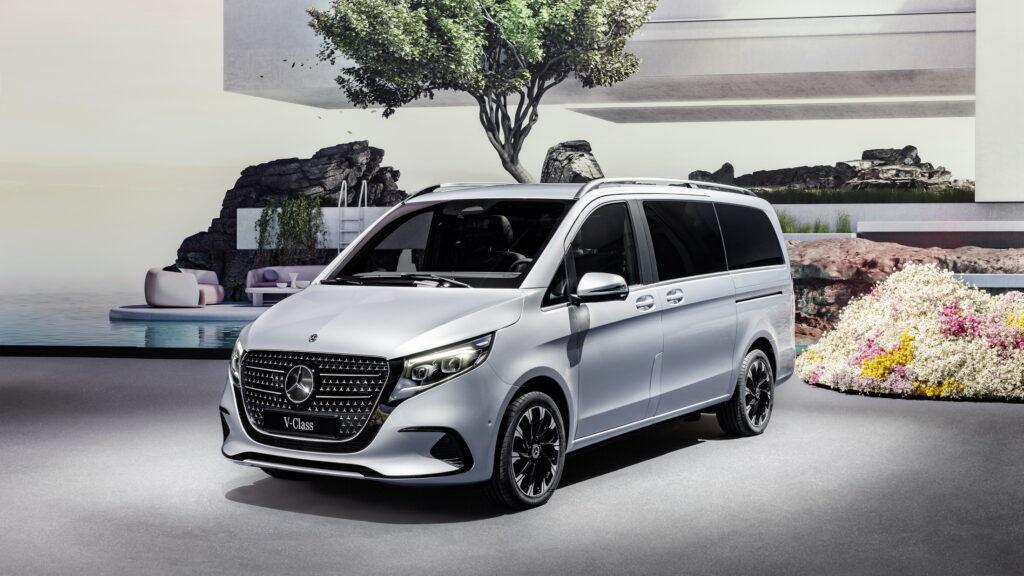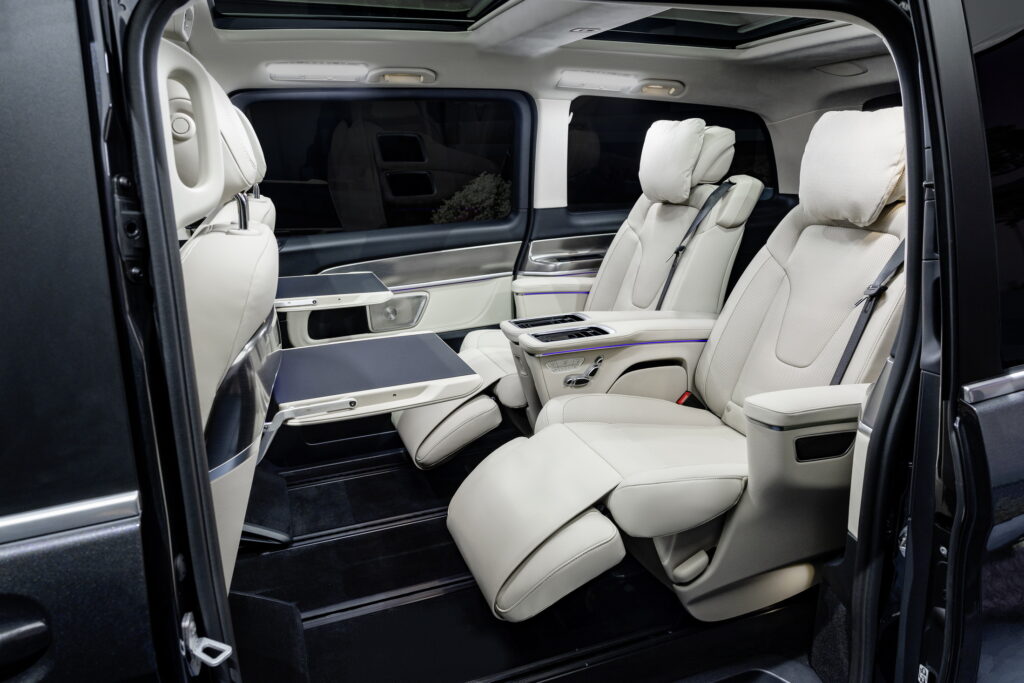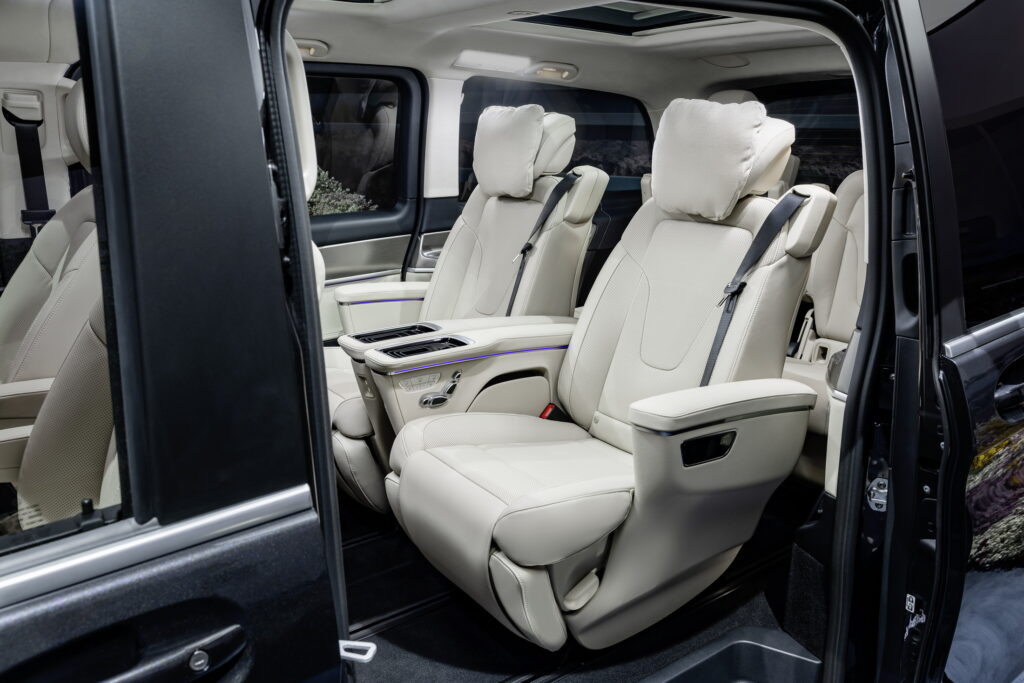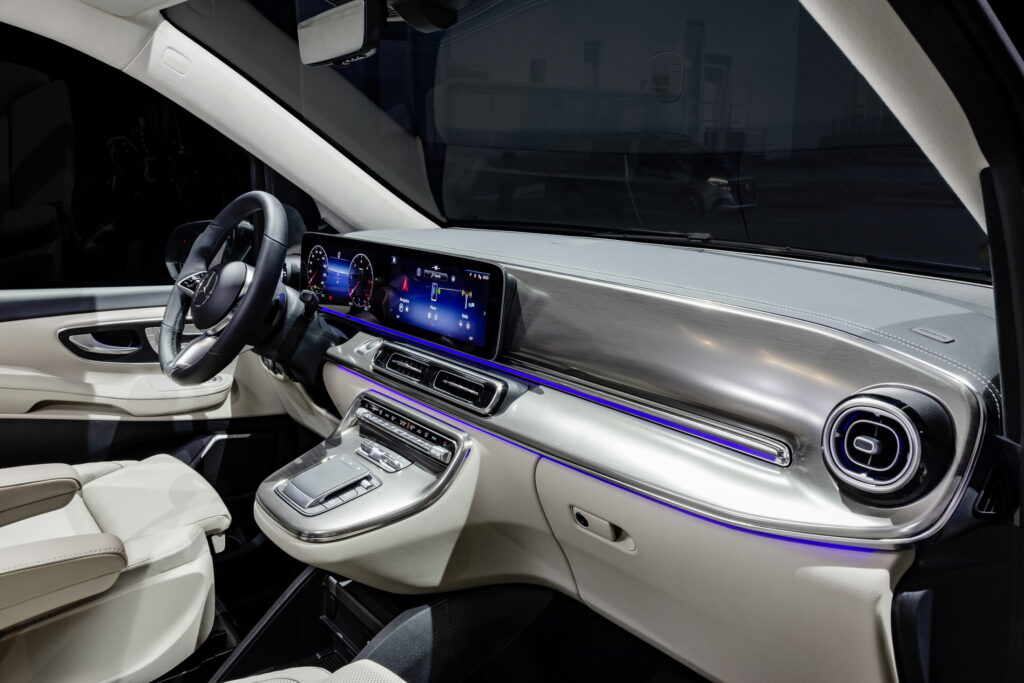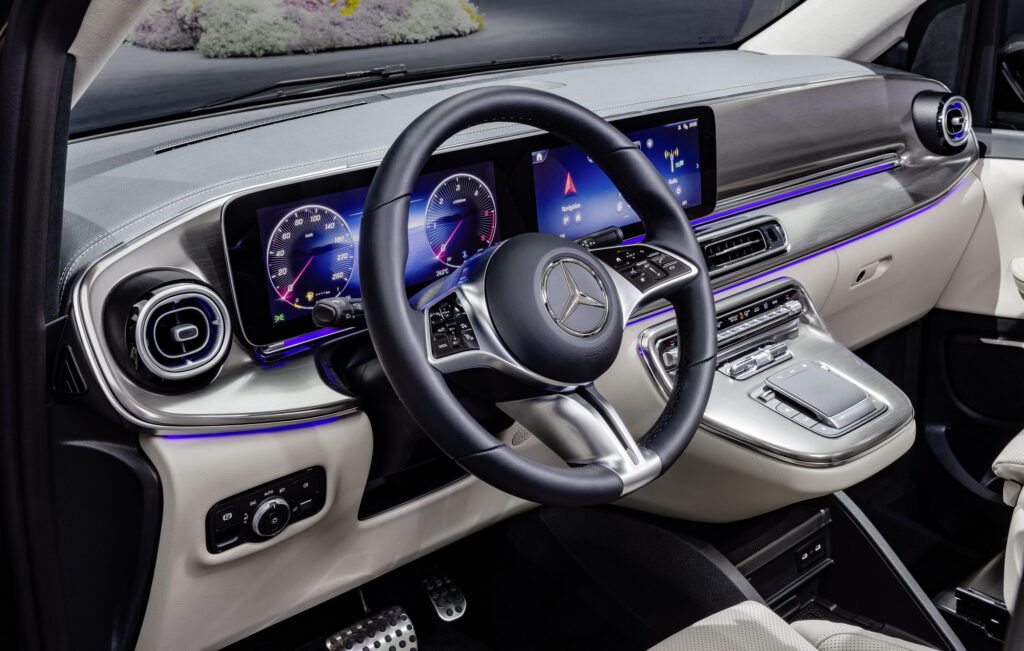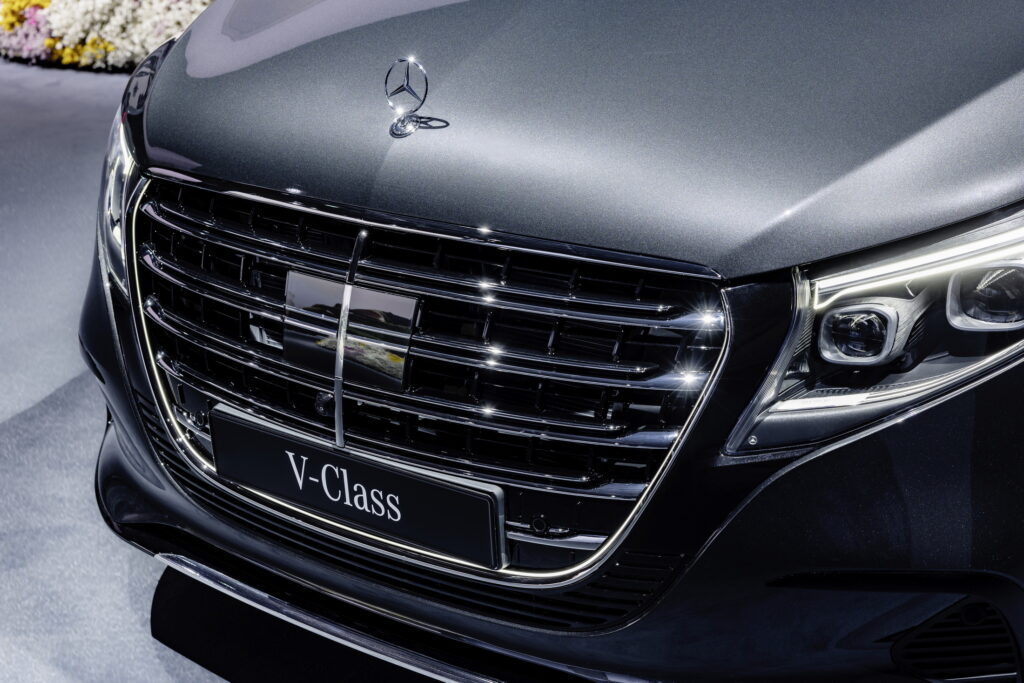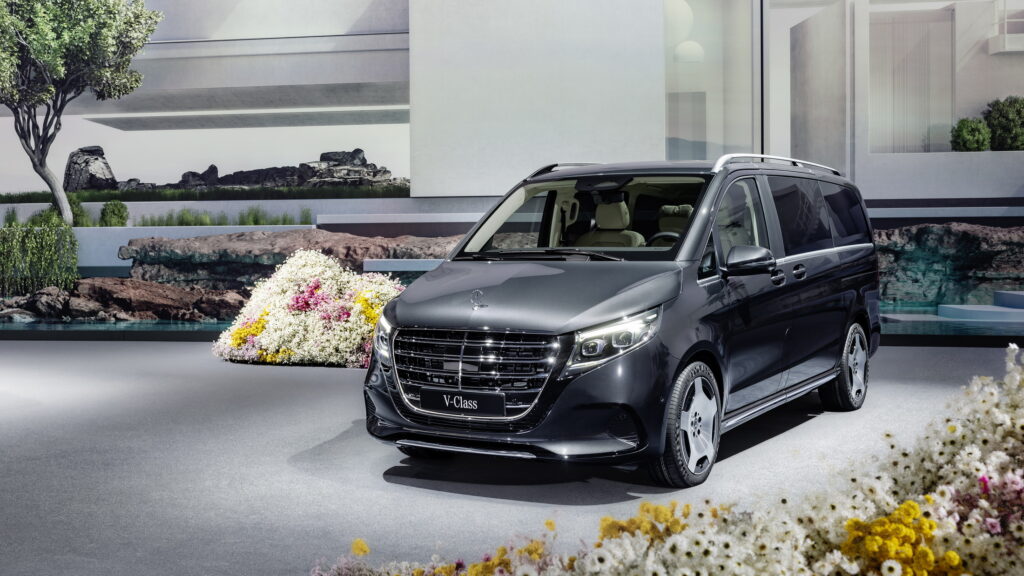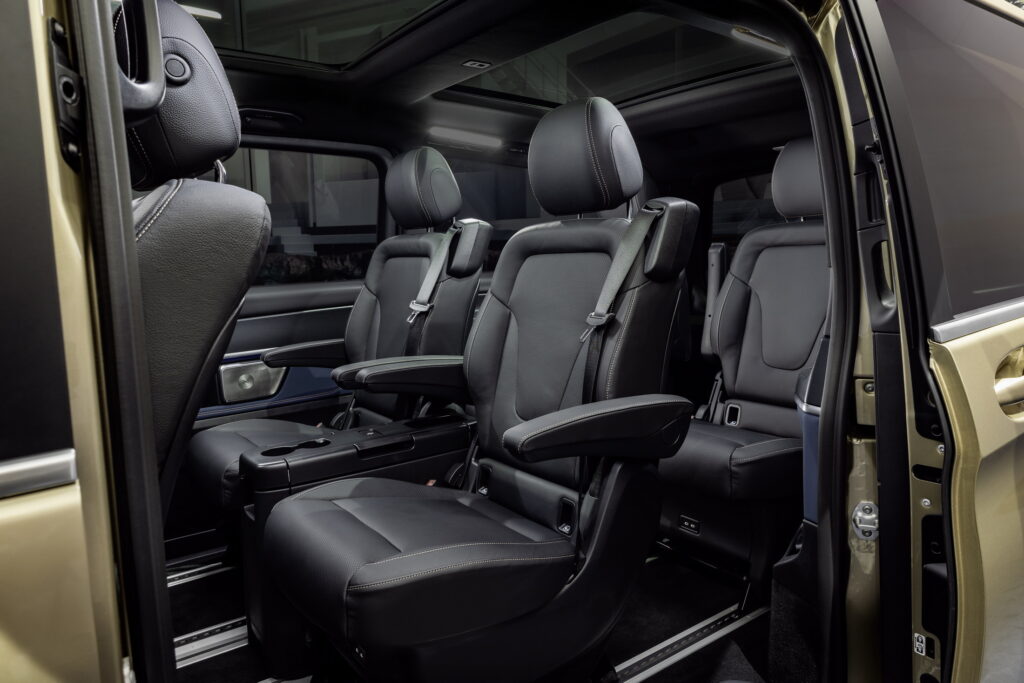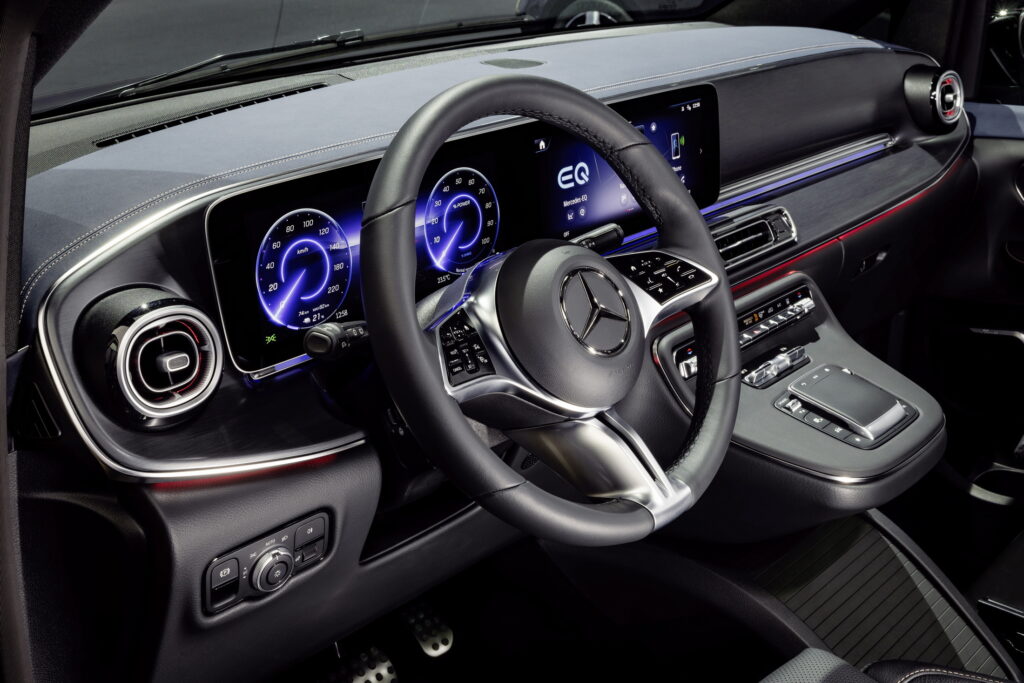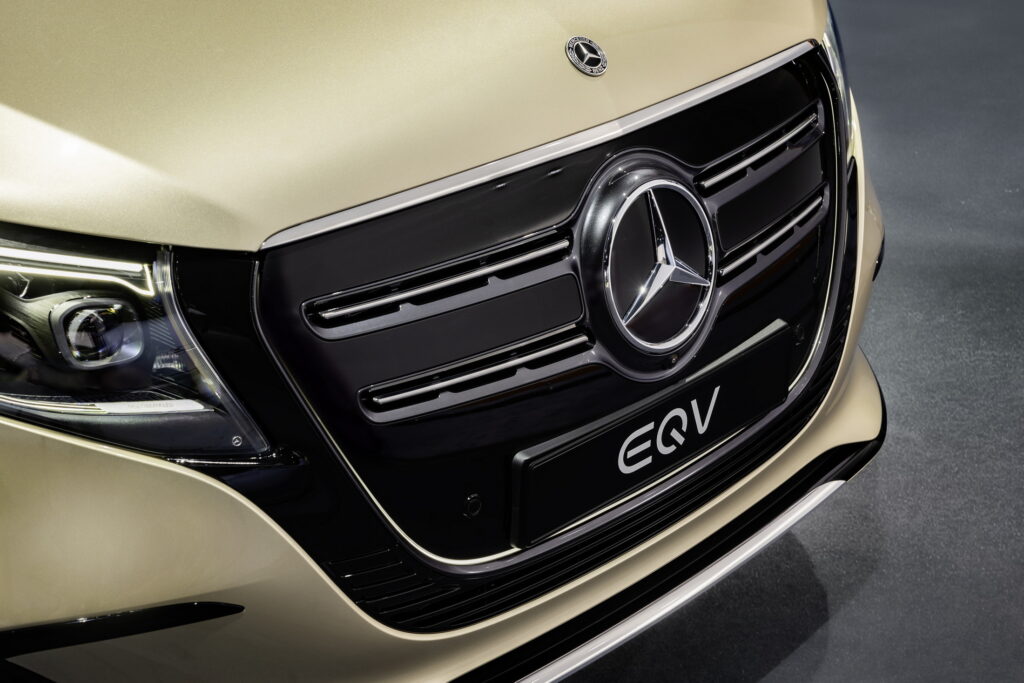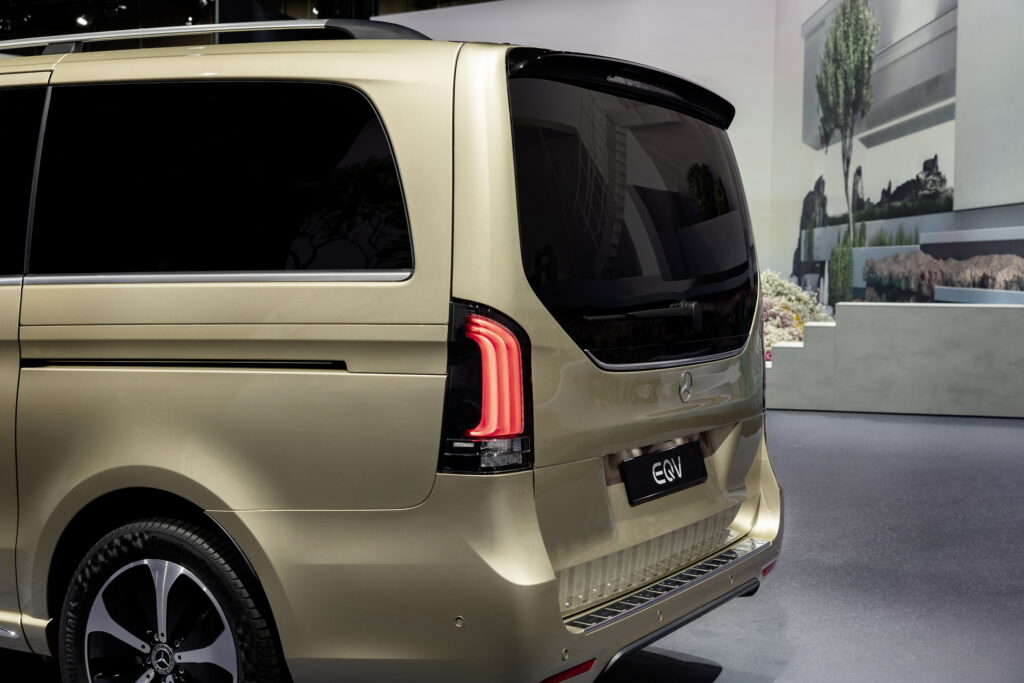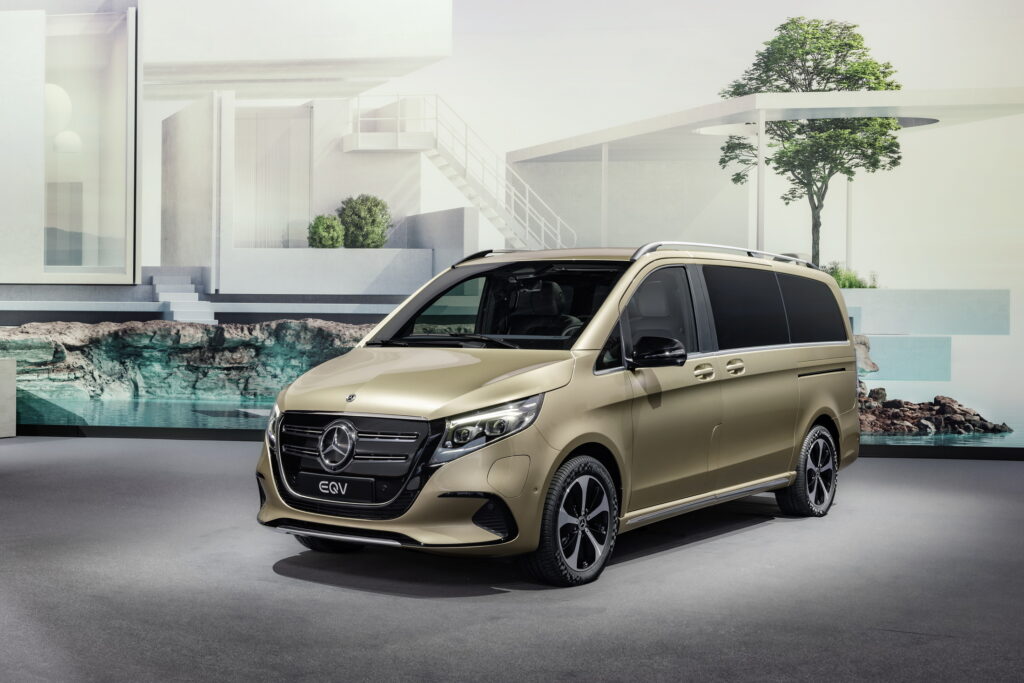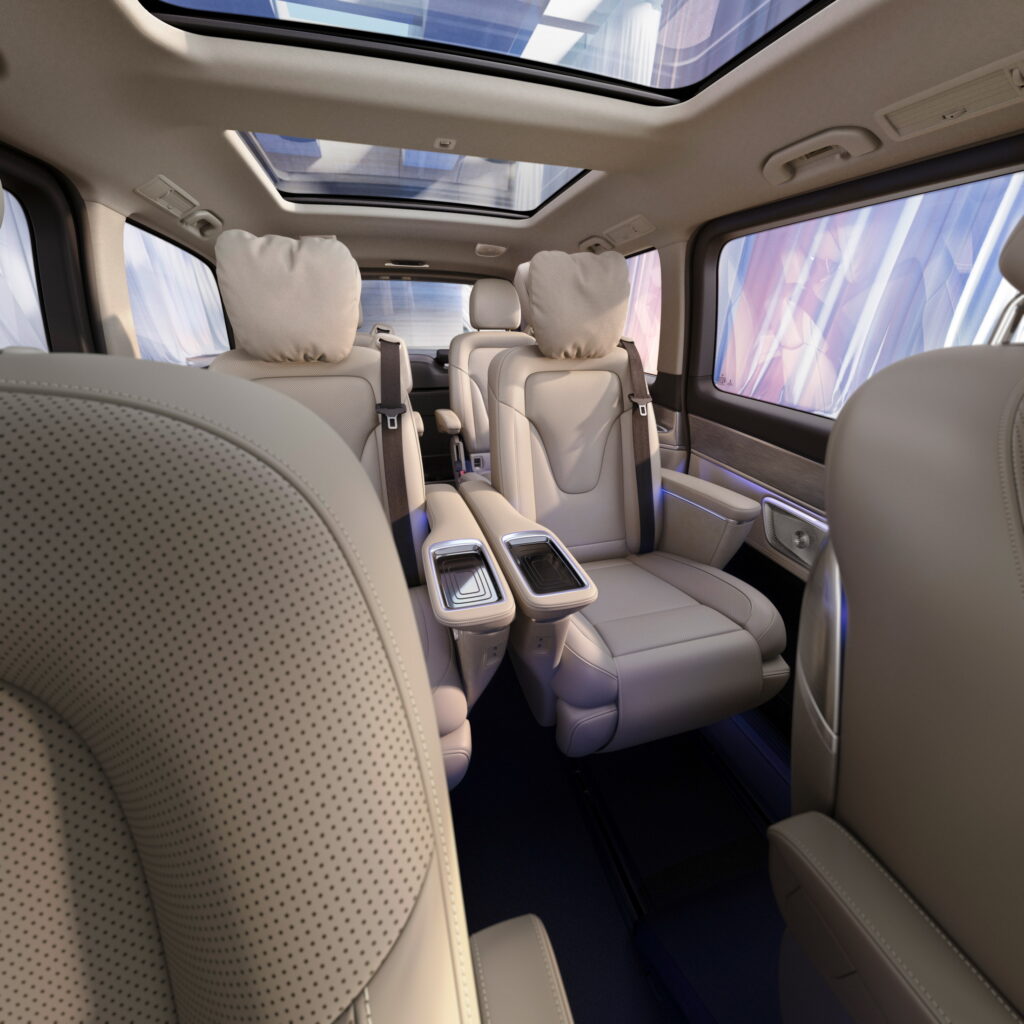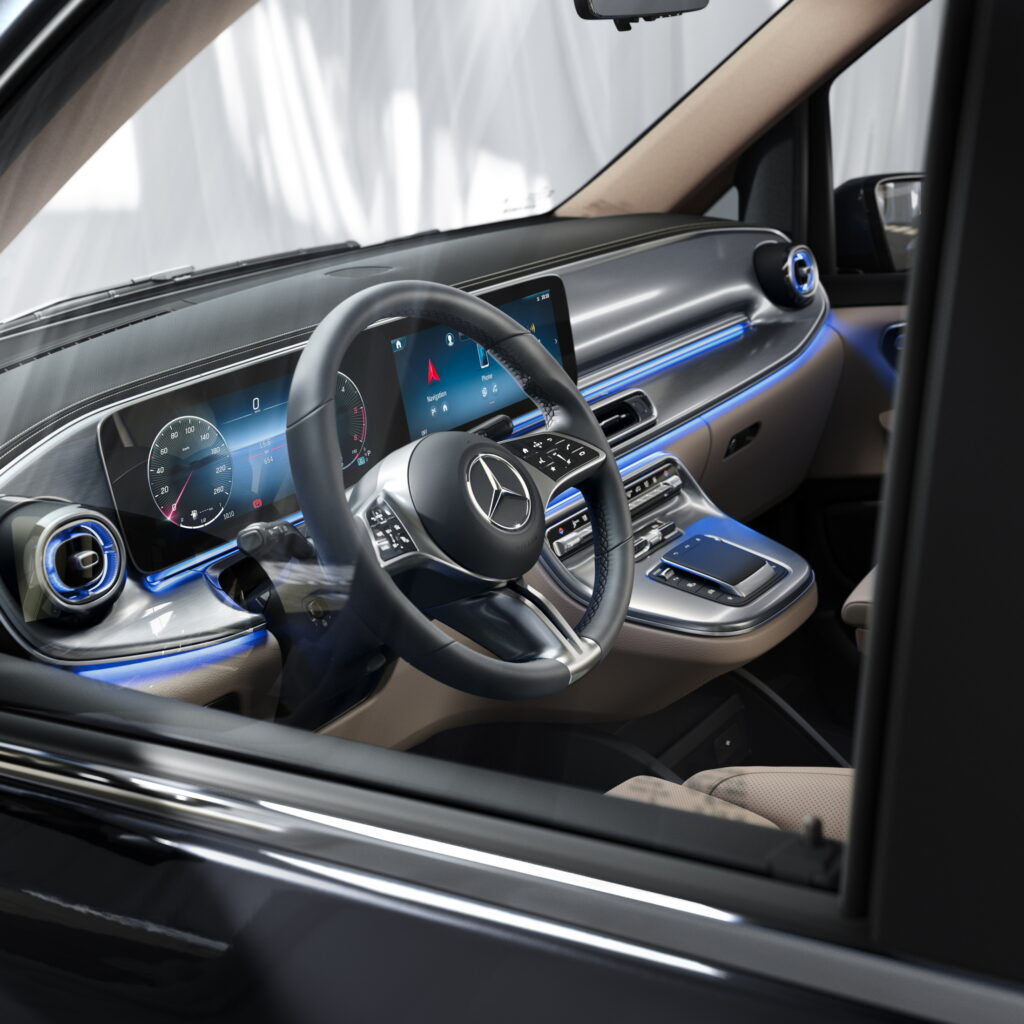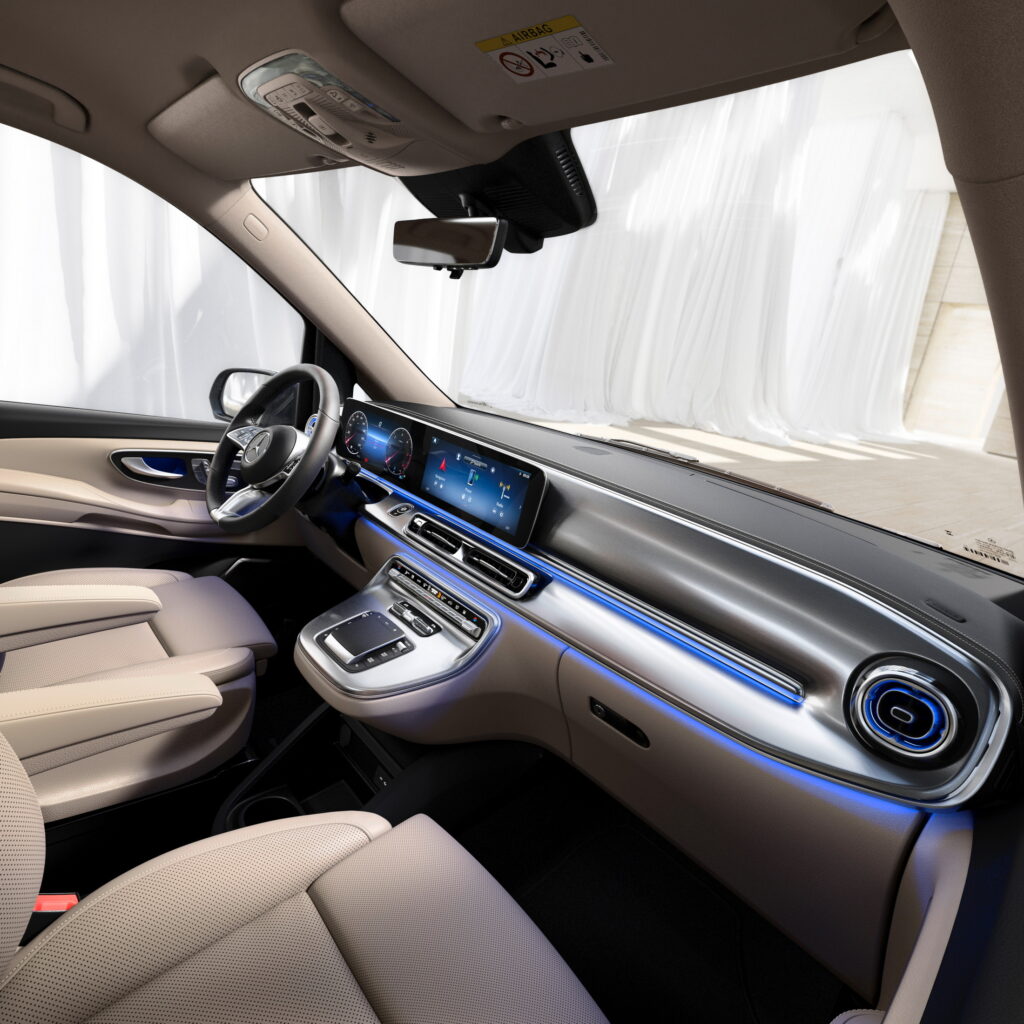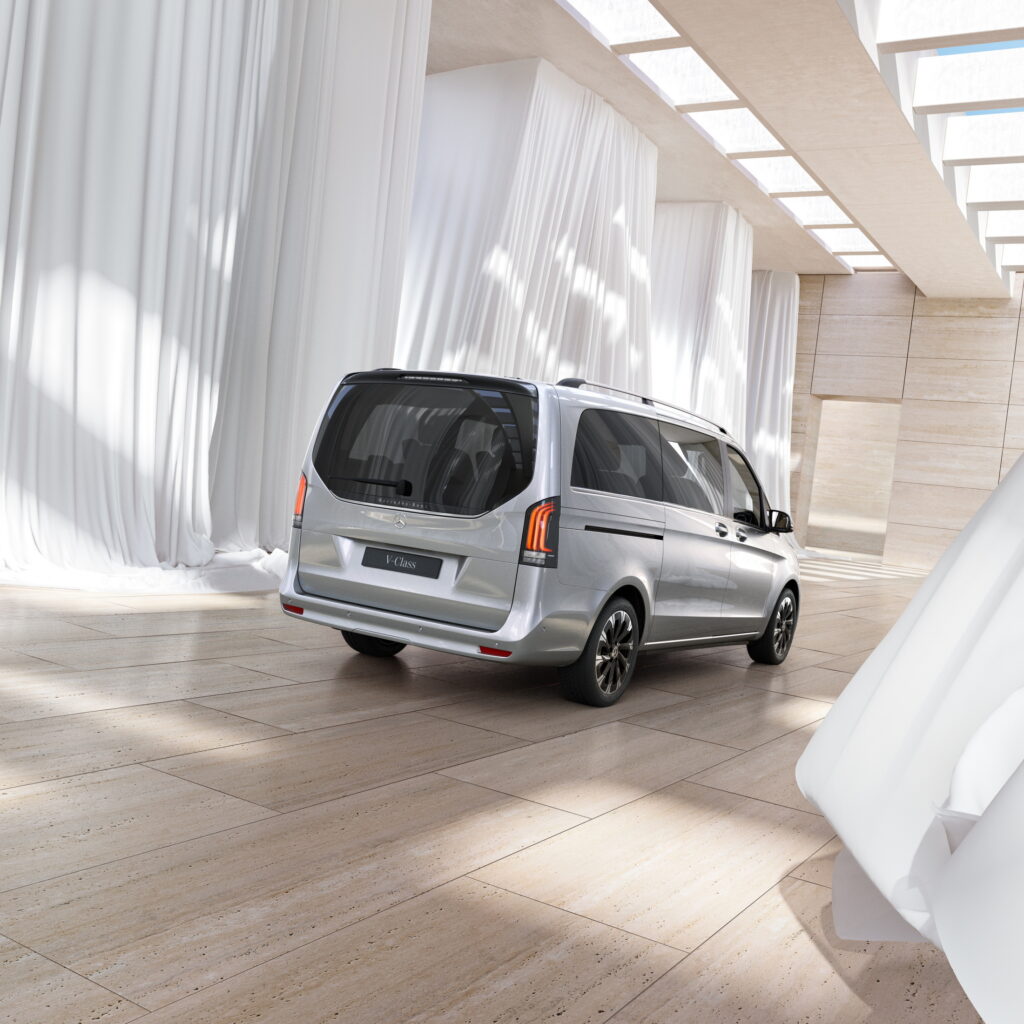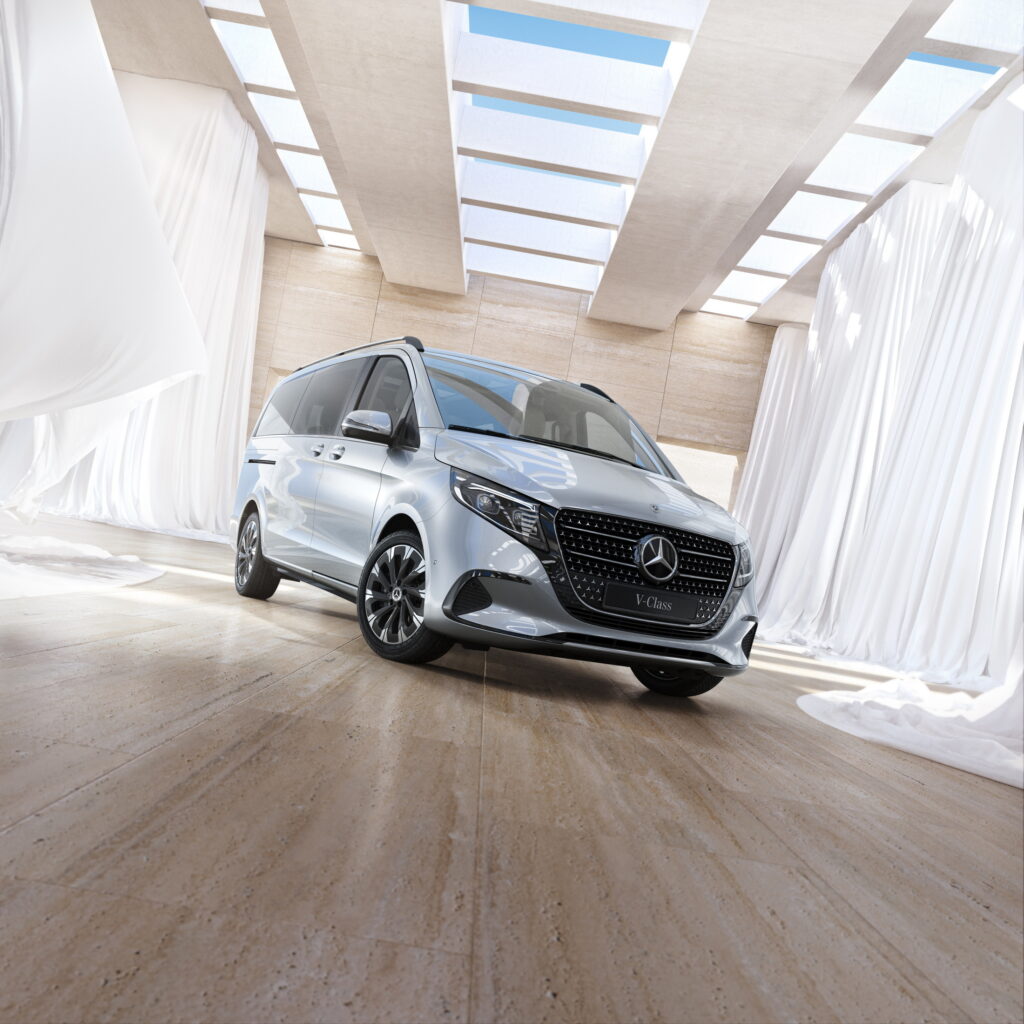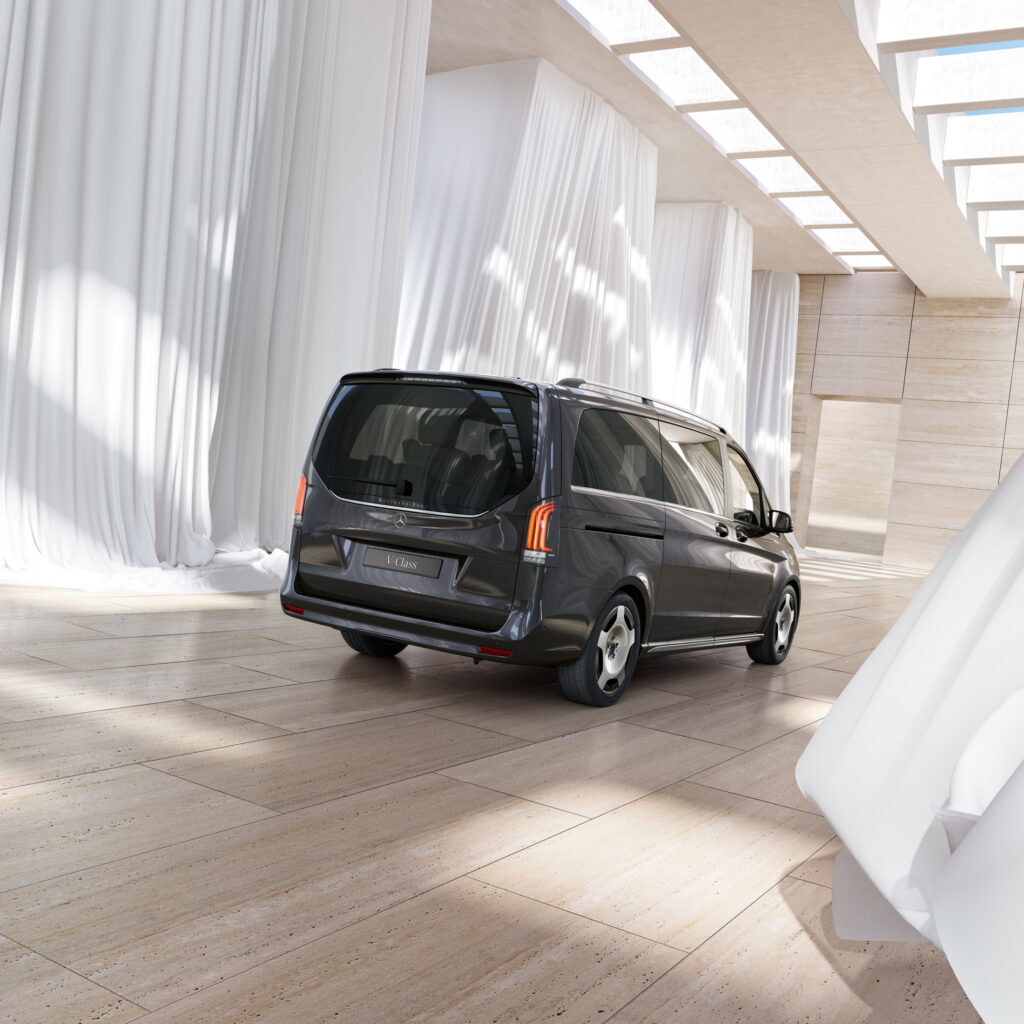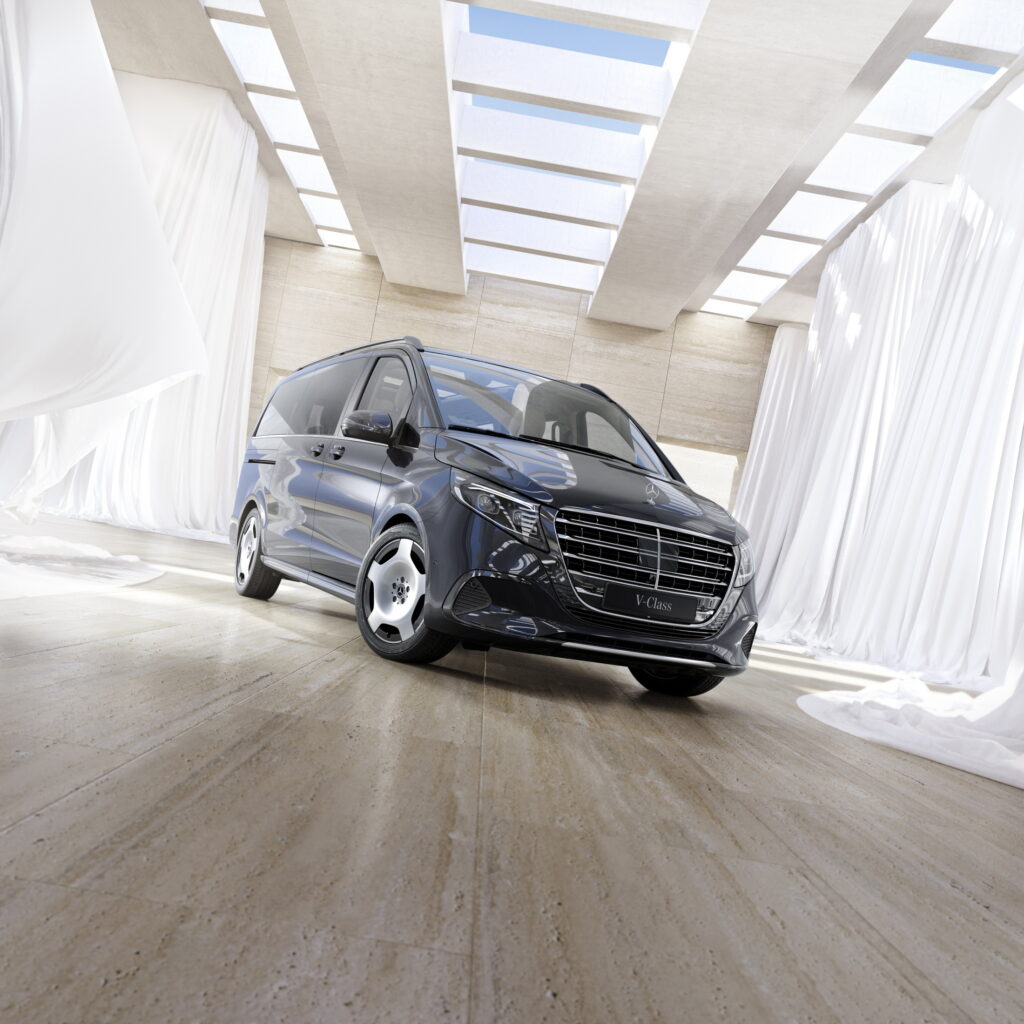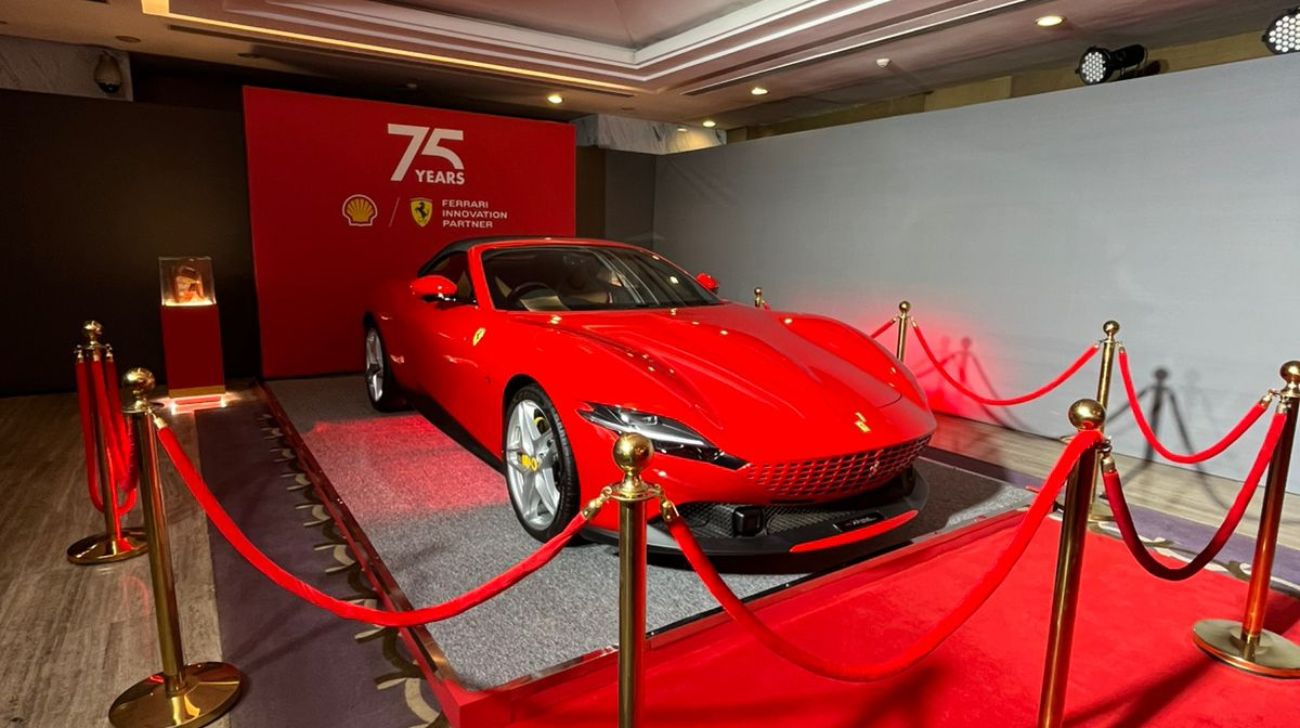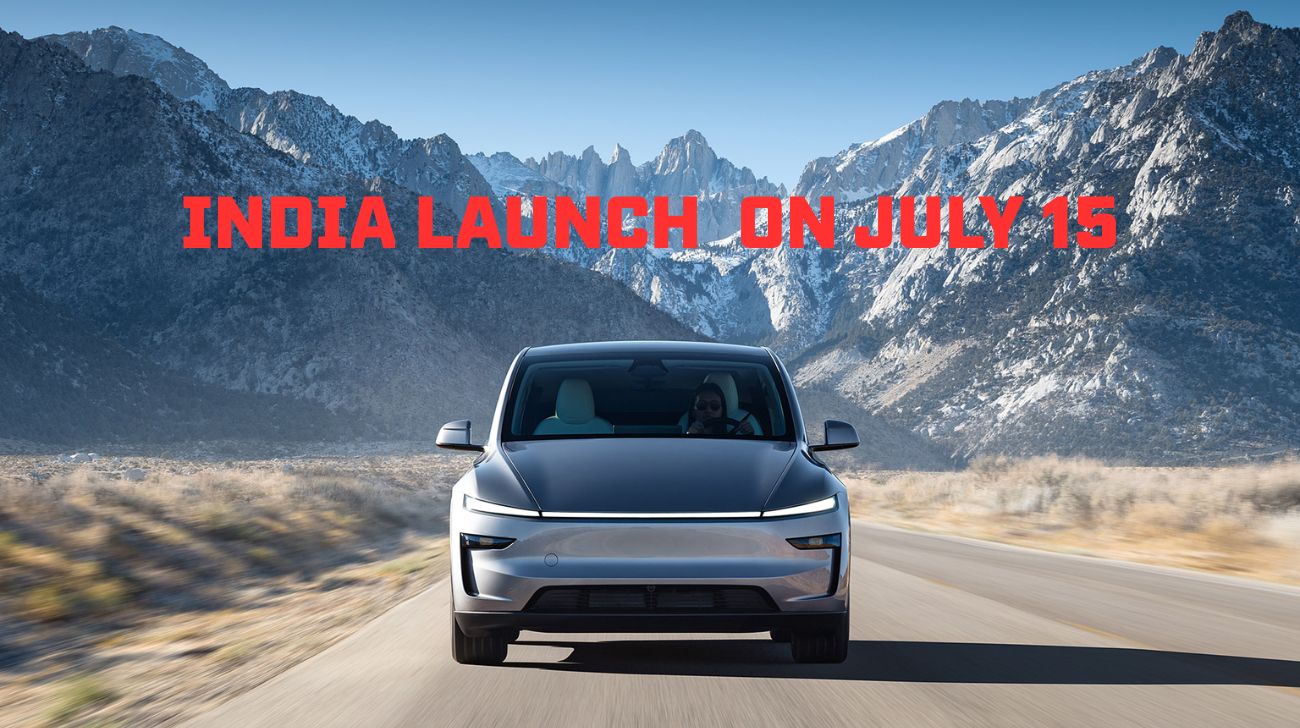The complete midsize van family from Mercedes-Benz has been revamped, making them more upscale than before. This includes passenger and commercial models in both ICE-powered and totally electric guises. The line comprises the Vito and eVito LCVs, the EQV and V-Class passenger vans, the V-Class Marco Polo camper, and more. All of them had internal renovations and minor cosmetic adjustments to increase safety, comfort, and technological features.
The third-generation V-Class, which made its debut in 2014 and had its first redesign in 2019, serves as the model's foundation. The new version includes a completely new front bumper with a much wider grille and more contemporary intakes. Every variation has a distinct grille design in addition to varied trim. As expected, the luxury-oriented V-Class and EQV appear more opulent, while the commercial Vito and eVito adopt a more practical aesthetic with unpainted bumpers in their base models.
With the exception of new wheels measuring 17, 18, and 19 inches, a brand-new color scheme, and the more elegant rear bumper of the V-Class and EQV, the remainder of the bodywork is mainly carried over. The V-Class's optional AMG Line and Night packages and the EQV package for its electric equivalent may both further spruce up their looks. The passenger vans come with Multibeam LED headlights and an LED strip around the grille, depending on the model.
Another area where the passenger and commercial ranges differ is the interior. The dashboard of the V-Class and EQV adopts a digital cockpit with a single panel containing two 12.3-inch screens, and with to new climate vents and ambient lighting, it almost matches the luxury appearance of Mercedes' mainstream car and SUV offerings. The Vito and eVito, on the other hand, get a simpler design with a 10.25-inch touchscreen and 5.5-inch instrument cluster display, as well as a dashboard configuration that is centred on practicality but with a less austere approach than their predecessors.
The fact that the firm made no mention of changing the powertrains suggests that the present range would be maintained. Recall that the previous EQV had a solitary electric motor that was capable of producing 201 horsepower (150 kW / 204 PS) and 362 Nm (267 lb-ft) of torque, with two alternative battery sizes—60 kWh for the EQV 250 and 90 kWh for the EQV 300, which has a range of up to 418 km (260 miles) between charges—the electric van was offered. The ICE-powered range had four-cylinder turbodiesel engines of 1.7, 2.0, and 2.2 liter displacements.
Mercedes hopes to sell more than half of all vans by 2030 after selling 40,000 electrified vehicles to date. The launch of the new modular and expandable Van Electric Architecture (VAN.EA) in 2026, which will eventually serve as the framework for Mercedes' upcoming generation of electric midsize and large vans, will mark a significant advancement.

